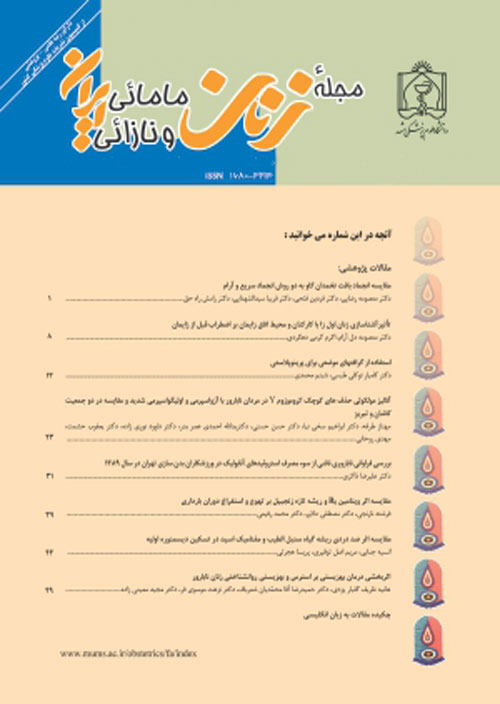Clinical symptoms, maternal and neonatal risk factors of 285 neonates with definitive sepsis
Neonatal sepsis is one of the most common causes of neonatal mortality. This study was performed with aim to evaluate the clinical symptoms, maternal and neonatal risk factors of definitive sepsis in neonates admitted to the neonatal intensive care unit.
This retrospective cohort study was conducted in 2011-2019 on 285 infants admitted to the NICU of Ghaem Hospital in Mashhad. Neonates with positive blood culture and at least one clinical symptom and laboratory result of sepsis were considered as definitive sepsis and entered the study. After confirming the diagnosis based on the blood culture and laboratory report, the researcher-made checklist containing maternal, neonatal, and laboratory characteristics of the neonates was completed. Data were analyzed by SPSS software (version 23) and independent t-test and Chi-square test. P<0.05 was considered statistically significant.
In this study, 35.44% of cases were diagnosed as early sepsis and 64.66% as late sepsis. The most common cause of fetal risk of early neonatal sepsis was preterm (86%) and the most common maternal risk factors for early neonatal sepsis were premature rupture of membrane (19.6%), preeclampsia (15.08%), hypertension (7.36%), chorioamnionitis (6.6%), and diabetes mellitus (4.56%). Duration of hospitalization, duration of mechanical ventilation, and duration of oxygen therapy were the risk factors for late sepsis. The most common clinical and laboratory symptoms were respiratory distress, hypotension, SPo2 loss, apnea, jaundice, abdominal distention, tachycardia seizures, high CRP (77%), thrombocytopenia (53%), leukocytosis (38%), coagulopathy (36%), and high ESR (22.3%).
The most common risk factor for early neonatal sepsis was prematurity before PROM. Therefore, controlling and eliminating the predisposing factors of PROM and prematurity may reduce the incidence of neonatal sepsis. The most common clinical symptom was respiratory distress and the most common laboratory symptom was positive CRP.
- حق عضویت دریافتی صرف حمایت از نشریات عضو و نگهداری، تکمیل و توسعه مگیران میشود.
- پرداخت حق اشتراک و دانلود مقالات اجازه بازنشر آن در سایر رسانههای چاپی و دیجیتال را به کاربر نمیدهد.


